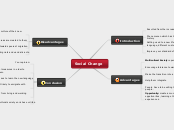par Steven Lwin Il y a 13 années
310
Developing ICT solutions
The process of developing and implementing ICT solutions involves several critical stages to ensure the final product meets user requirements and operates effectively. Initially, analysis is conducted using formal techniques like data flow diagrams and system flow charts to gather detailed user requirements and assess existing conditions, including users'









